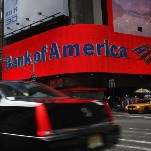How Haunted Houses Overran America
In DepthWe’re well into October, and that means there is nowhere in America you could possibly hide from ads for haunted houses. Charmingly slapped-together community fundraiser versions, elaborate church-sponsored Hell Houses, haunted hayrides, SUPER XTREME horror experiences—they’re everywhere. How did this happen?
-

-

-

-

-

-

-

-

-

-

-

-

-

-

-

-

-

-

-

-

-

-

-

-

-

-

-

-

-

-

-

-

-

-

-

-

-

-

-

-








































